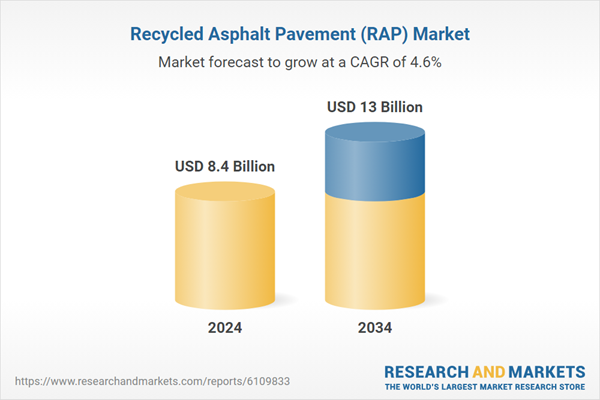In the pursuit of more sustainable road rehabilitation solutions, RAP presents considerable economic and ecological advantages. Recycled asphalt can be integrated into paving projects without compromising performance, offering a durable alternative to conventional asphalt. Its compatibility with existing batch and drum mix technologies makes it a practical choice for large-scale road construction. In recent years, the increased focus on reducing lifecycle emissions from infrastructure projects has also contributed to RAP’s rising popularity. By incorporating reclaimed materials into construction workflows, contractors are able to lower their carbon footprints while maintaining high structural integrity. Moreover, the operational flexibility of RAP, such as its ability to be processed on-site using mobile recycling equipment, adds to its efficiency and widespread adoption.
Among recycling methods, hot mix asphalt (HMA) recycling has emerged as the leading process, accounting for 49.2% of the overall market share in 2024. HMA recycling stands out due to its ability to deliver near-virgin performance while significantly cutting down on both material costs and carbon emissions. Its adaptability to high-RAP-content mixes has made it the preferred method for highway resurfacing and road upgrades. Additionally, advances in technology have improved the consistency and quality of HMA recycling processes, making it feasible for use in structurally demanding road layers.
In terms of application, road construction and rehabilitation dominated the market, representing 64.3% of total demand in 2024. The increasing need for sustainable urban development and cost-effective roadway upgrades has led to a surge in RAP usage within this segment. Recycled materials are now widely incorporated into arterial and local roads, helping municipalities and private contractors meet environmental goals while optimizing resource use. The ability to maintain pavement performance using high percentages of recycled content has made RAP a key component in public and private infrastructure projects. Its integration into roadworks has become more strategic as more jurisdictions seek to align with long-term sustainability targets.
When segmented by end user, the public sector held the largest share of the RAP market in 2024, accounting for 56.5%. Government-backed infrastructure initiatives and sustainability mandates have made RAP a standard component in public works. Authorities at national and regional levels increasingly require the use of recycled materials in tender specifications, particularly for highways and municipal redevelopment projects. Public agencies are also prioritizing materials that contribute to environmental certifications and long-term performance, thereby reinforcing the value of RAP in procurement strategies.
Regionally, China led the global RAP market, with a valuation of USD 2.7 billion in 2024. The country’s strong emphasis on infrastructure connectivity, urban renewal, and environmental responsibility has driven large-scale adoption of recycled asphalt across its provinces. Policy frameworks supporting recycled construction materials, coupled with the growth of modern recycling plants, continue to support RAP deployment in various projects. China’s structured approach to integrating RAP in national highway development has contributed significantly to the region’s dominant market share.
The competitive landscape of the recycled asphalt pavement industry is evolving as major infrastructure companies enhance their sustainability credentials. Market leaders are incorporating asphalt recycling into core operations, focusing on vertical integration to ensure quality control across the supply chain. From owning aggregate production units to operating asphalt mix plants and paving services, these companies have established streamlined processes to recover and reuse reclaimed asphalt efficiently.
Many are expanding their recycling capacity by setting up dedicated facilities, upgrading drum mixers, and utilizing mobile units for high-RAP applications. Technological integration is also becoming more prominent, with firms deploying digital tools for precise RAP dosing, temperature regulation, and emissions monitoring to support compliance with low-carbon construction standards. In addition, industry participants are collaborating with public agencies on research and pilot projects aimed at enhancing specifications for recycled asphalt use and optimizing full-depth recycling techniques.
Comprehensive Market Analysis and Forecast
- Industry trends, key growth drivers, challenges, future opportunities, and regulatory landscape
- Competitive landscape with Porter’s Five Forces and PESTEL analysis
- Market size, segmentation, and regional forecasts
- In-depth company profiles, business strategies, financial insights, and SWOT analysis
This product will be delivered within 2-4 business days.
Table of Contents
Companies Mentioned
- Colas S.A.
- Eurovia (VINCI Group)
- Granite Construction Inc.
- Oldcastle Materials (CRH)
- LafargeHolcim Ltd.
- CEMEX S.A.B. de C.V.
- Vulcan Materials Company
- Road Science
- The Lane Construction Corporation
- GreenRap
- Downer Group (Reconophalt)
- Gencor Industries
- Phoenix Industries
- Atmos Technologies
Table Information
| Report Attribute | Details |
|---|---|
| No. of Pages | 220 |
| Published | June 2025 |
| Forecast Period | 2024 - 2034 |
| Estimated Market Value ( USD | $ 8.4 Billion |
| Forecasted Market Value ( USD | $ 13 Billion |
| Compound Annual Growth Rate | 4.6% |
| Regions Covered | Global |
| No. of Companies Mentioned | 14 |









